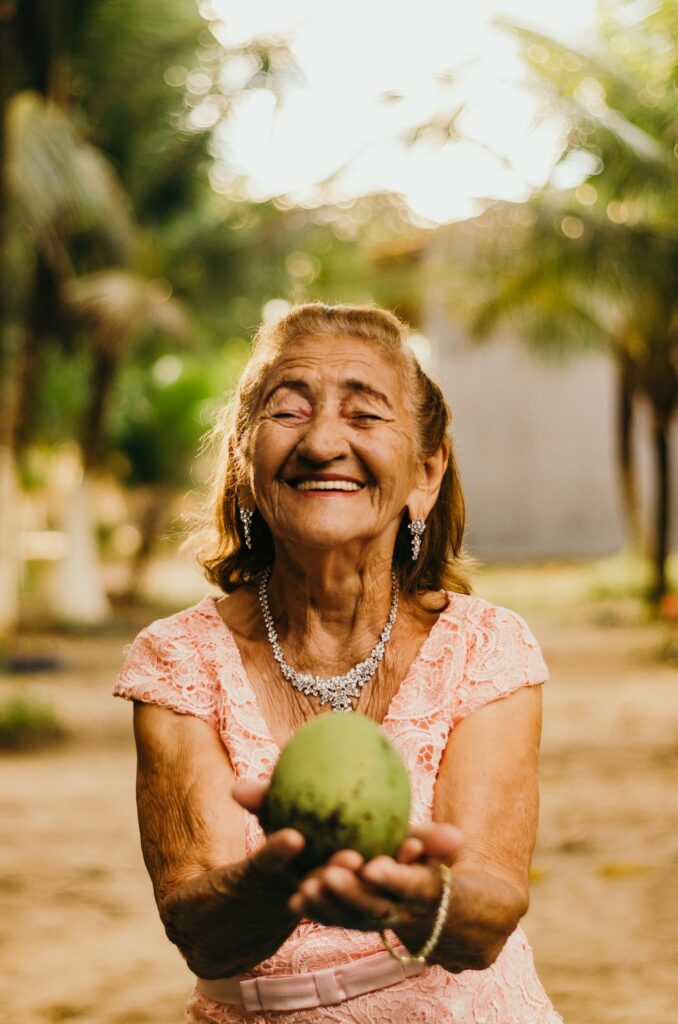Gratitude For Seniors Guide: An Enhanced Well-being
Introduction to Gratitude for Seniors
Gratitude practices have become a cornerstone in the pursuit of happiness and well-being, especially among seniors. This piece delves into the transformative power of gratitude for the elderly, backed by scientific research and personal anecdotes. We explore the psychological and physiological benefits, underscore the changes gratitude can bring to neural pathways, and examine the release of “feel-good” chemicals as a result of grateful living. Personal stories from seniors will add a layer of authenticity and illustrate the profound impact of gratitude on their lives.
The Science of Gratitude for Seniors
Understanding Neural Pathways and Chemicals
The human brain is remarkably plastic, which means it has the ability to change and adapt throughout life. Gratitude can reinforce positive neural pathways, making seniors more resilient to stress and depression. When a person feels grateful, their brain releases a surge of feel-good neurotransmitters like dopamine and serotonin. This natural chemical release is what underpins the mood-boosting effects of gratitude practices.
The Impact of Gratitude on Health
Studies have linked gratitude to a host of health benefits for seniors, including lower blood pressure, improved immune function, and better sleep. It is not merely about feeling better emotionally; gratitude can lead to tangible improvements in physical health, which is paramount for seniors managing chronic conditions or navigating the challenges of aging.

How to Practice Gratitude for Seniors
Simple Daily Rituals
Adopting gratitude as a daily ritual can be both comforting and enriching. For seniors, simple practices can be incorporated into their routines with minimal effort and maximum benefit. Here are some effective practices:
- Maintaining a Gratitude Journal: Encourage seniors to write down three things they are grateful for each day. This can be done with a physical notebook or a digital app designed for note-taking. The act of writing helps to solidify feelings of gratitude and serves as a powerful reminder of the positive aspects of life.
- Gratitude Reminders: Utilize sticky notes, phone alarms, or set routines (like mealtime reflections) as prompts to pause and think of something they’re grateful for. This habit can transform routine moments into opportunities for thankfulness.
- Gratitude Visits or Letters: Writing letters to friends or family members to express appreciation can be a deeply fulfilling practice, offering a sense of closure or deepening bonds. If writing is challenging, seniors might record audio messages or arrange phone calls instead.
- Thankful Reflections Before Bed: Taking time before sleep to reflect on the positive events of the day can promote better sleep and a more positive outlook upon waking.
- Expressing Thanks Aloud: Vocalizing gratitude, either alone or with others, can strengthen feelings of thankfulness and reinforce the habit of seeking out the positive.
Community and Group Activities
Gratitude doesn’t have to be a solo practice; it can be enriched through shared experiences. Here are some community-centered activities that can help foster gratitude among seniors:
- Group Gratitude Sessions: Organizing weekly or monthly meetings where participants share what they’re grateful for can build a supportive community and help seniors feel connected to a larger group.
- Volunteering: Contributing time to community service is a powerful way for seniors to feel useful and valued, fostering gratitude both in themselves and those they help.
- Gratitude Trees: In a community center or living facility, a bulletin board or an actual tree can serve as a “gratitude tree,” where seniors can post notes of gratitude, which also serves to inspire others.
- Community Appreciation Events: Events that celebrate the contributions of community members can provide a platform for mutual appreciation and gratitude.
- Gratitude Crafts: Engaging in crafts that focus on themes of thankfulness, such as creating thank-you cards or gratitude stones, can be a tangible way to express and share gratitude.
These gratitude practices are more than just exercises; they’re opportunities for seniors to cultivate a more positive outlook on life and to interact with the world around them in a meaningful way. Through both personal rituals and community engagement, gratitude can become a fulfilling part of everyday life for seniors.

Gratitude Practices for Seniors
Gratitude vs. Other Well-being Practices
When examining various well-being practices, gratitude emerges as uniquely accessible and low-impact. Many popular well-being interventions, such as physical exercise or skill-based hobbies, can be demanding for seniors. Physical activities may pose risks for those with limited mobility or chronic health conditions, while new skills may demand cognitive demands that are challenging for those facing age-related changes in brain function.
Gratitude, on the other hand, is an exercise of the mind that requires little more than a moment’s reflection. It can be practiced in any setting and adapted to any ability level. For example, while yoga or meditation may require learning specific techniques and positions, gratitude can be as simple as thinking of a person or situation that brought happiness. This ease of entry makes gratitude an inclusive practice, suitable for a broad range of seniors with diverse health and mobility statuses.
Moreover, gratitude’s flexibility allows for incremental involvement, which can start with acknowledging one’s blessings and extend to more structured activities like gratitude visits or letter writing. Its adaptability also means that it can be woven into other well-being practices, creating a multi-faceted approach to mental health that amplifies the benefits of both.

Incorporating Technology
The intersection of technology and gratitude practices offers an exciting frontier for enhancing the well-being of seniors. With the advent of smartphones and tablets, numerous apps are designed to promote gratitude. These digital tools often come with user-friendly interfaces that account for potential visual or motor skill impairments common in older adults.
Apps such as “Grateful: A Gratitude Journal” or “Happify” are equipped with features like daily prompts, reminders, and a variety of gratitude exercises, making it convenient for seniors to engage with gratitude practices regularly. Online platforms also provide communities where seniors can share their gratitude stories with others, fostering a sense of connection and shared experience.
Accessibility features, such as voice commands and enlarged text, further enhance the usability of these technologies for seniors. By incorporating technology into gratitude practice, seniors can maintain a consistent routine regardless of mobility or health constraints. It also opens the door to remote sharing and connection with family and friends, which can be especially meaningful for those who may be geographically separated from loved ones.
In summary, the digital amplification of gratitude practice offers seniors a modern tool that is at once accessible, engaging, and community-building. It adapts to their needs, enriches their well-being practice, and provides a platform for connectivity in an increasingly isolated world.
Challenges and Considerations
Recognizing the Limits
Gratitude is a powerful tool for enhancing well-being, but it is essential to acknowledge its bounds. The effectiveness of gratitude practices can be influenced by several factors, including personal health conditions, psychological disposition, and the complexity of one’s life circumstances. While studies have shown that a grateful outlook can bolster happiness and health, it does not replace medical treatment or the need for comprehensive care in managing chronic illnesses or mental health disorders. Caregivers and seniors should view gratitude practices as a complement to medical advice, not a substitute.
For instance, a senior with mobility issues may find their frustration and sadness not entirely alleviated by gratitude alone. Similarly, someone undergoing the emotional toll of bereavement may find that gratitude provides comfort but doesn’t erase the pain of loss. It’s important for both seniors and those who support them to recognize that gratitude practices serve to enhance life rather than to fix the unfixable.
Tailoring Practices to Individual Needs
Gratitude practices offer a wide range of activities, but their benefits are most felt when they align with individual lifestyles and capabilities. For some seniors, writing detailed gratitude letters may be a rewarding experience that allows them to express deep-seated feelings of thankfulness. However, for those who may have arthritis or other conditions that make writing painful, alternative methods such as verbalizing gratitude or using voice-to-text applications can be just as effective.
Similarly, social expressions of gratitude, like community volunteering or participating in group activities, may be ideal for extroverted seniors who draw energy from social interactions. In contrast, introverted or home-bound individuals might prefer private reflection or meditation on gratitude.
Customization can also come in the form of integrating gratitude with existing hobbies or interests. For example, a senior who enjoys gardening might find gratitude in the daily growth and health of their plants, while another who enjoys cooking may focus on the pleasure of creating meals for others.
It’s also crucial to consider cultural and personal values when adopting gratitude practices. Some seniors may prefer to express gratitude in ways that align with their cultural heritage or religious beliefs, which can enhance the meaningfulness and therefore the impact of the practice.
In tailoring gratitude practices, it’s beneficial to start small and gradually build up to more significant acts or deeper levels of reflection. This approach helps to establish a sustainable routine that doesn’t feel overwhelming or burdensome. Seniors should be encouraged to experiment with different practices to discover what feels most natural and impactful for them. It’s this personalized approach that will yield the most potent results, creating a gratifying and enduring gratitude practice.
Conclusion to Gratitude For Seniors Guide
The beauty of gratitude lies in its simplicity and profound impact on quality of life. Through a mix of science and storytelling, this article has shed light on how seniors can harness the power of gratitude to improve their mental and physical well-being. Gratitude is more than just a practice; it’s a lifestyle choice that can lead to lasting changes and a brighter, more hopeful outlook on life.
Resources and Further Reading
In support of continued learning and practice, we provide a curated list of resources, books, and websites dedicated to gratitude practices. We also list various sellers and platforms where readers can find tools and materials to aid their gratitude journey.
Gratitude for Seniors Resources :
- Greater Good in Action: https://greatergood.berkeley.edu/topic/gratitude
- The John Templeton Foundation: https://www.templeton.org/news/a-grateful-life
- The Gratitude Project: https://ggsc.berkeley.edu/what_we_do/major_initiatives/expanding_gratitude
- The Giving Tree Project: https://thegivingtreeproject.org/
- The Thank-You Project: https://thankyouproject.org/

